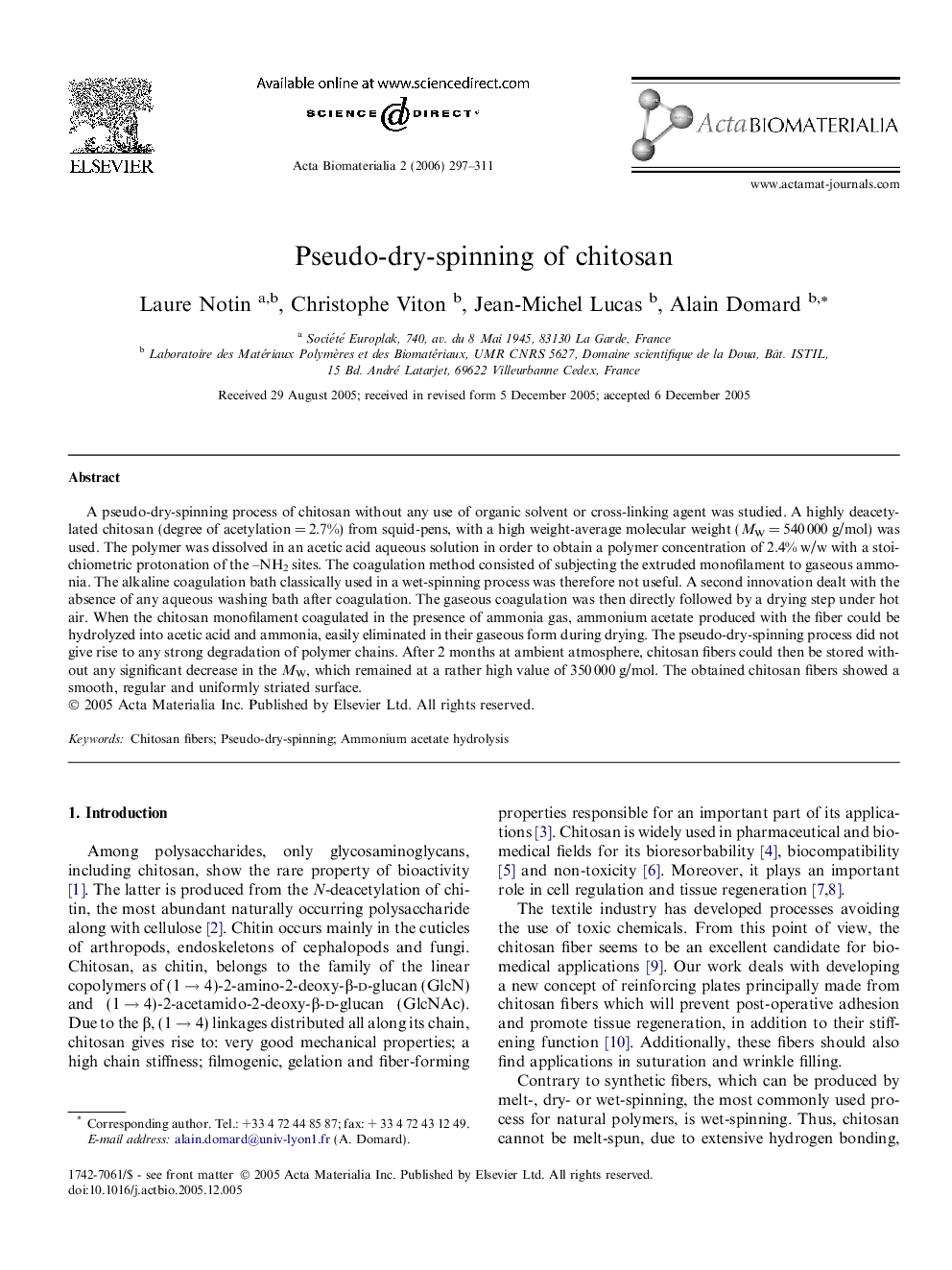| Article ID | Journal | Published Year | Pages | File Type |
|---|---|---|---|---|
| 2184 | Acta Biomaterialia | 2006 | 15 Pages |
A pseudo-dry-spinning process of chitosan without any use of organic solvent or cross-linking agent was studied. A highly deacetylated chitosan (degree of acetylation = 2.7%) from squid-pens, with a high weight-average molecular weight (MW = 540 000 g/mol) was used. The polymer was dissolved in an acetic acid aqueous solution in order to obtain a polymer concentration of 2.4% w/w with a stoichiometric protonation of the –NH2 sites. The coagulation method consisted of subjecting the extruded monofilament to gaseous ammonia. The alkaline coagulation bath classically used in a wet-spinning process was therefore not useful. A second innovation dealt with the absence of any aqueous washing bath after coagulation. The gaseous coagulation was then directly followed by a drying step under hot air. When the chitosan monofilament coagulated in the presence of ammonia gas, ammonium acetate produced with the fiber could be hydrolyzed into acetic acid and ammonia, easily eliminated in their gaseous form during drying. The pseudo-dry-spinning process did not give rise to any strong degradation of polymer chains. After 2 months at ambient atmosphere, chitosan fibers could then be stored without any significant decrease in the MW, which remained at a rather high value of 350 000 g/mol. The obtained chitosan fibers showed a smooth, regular and uniformly striated surface.
